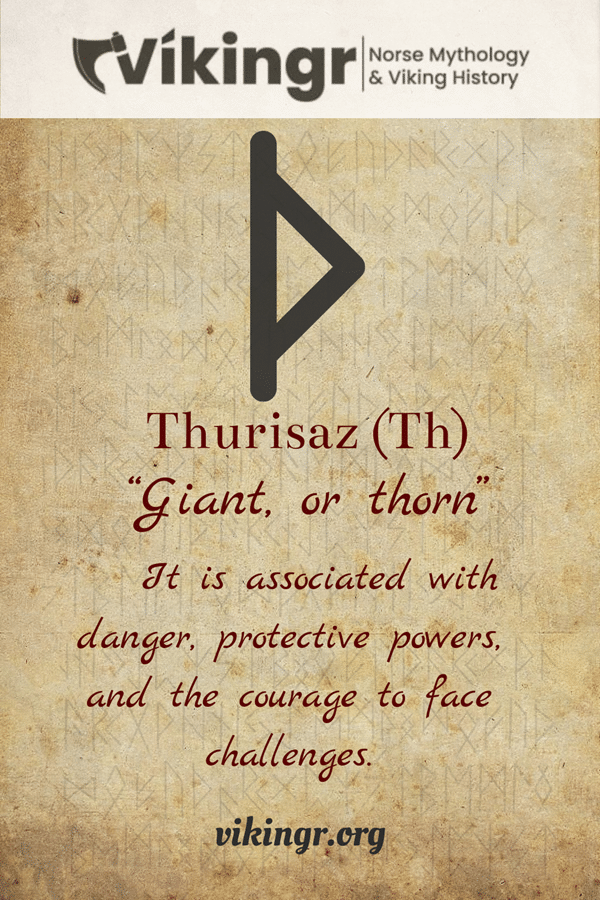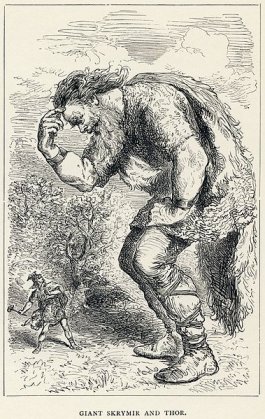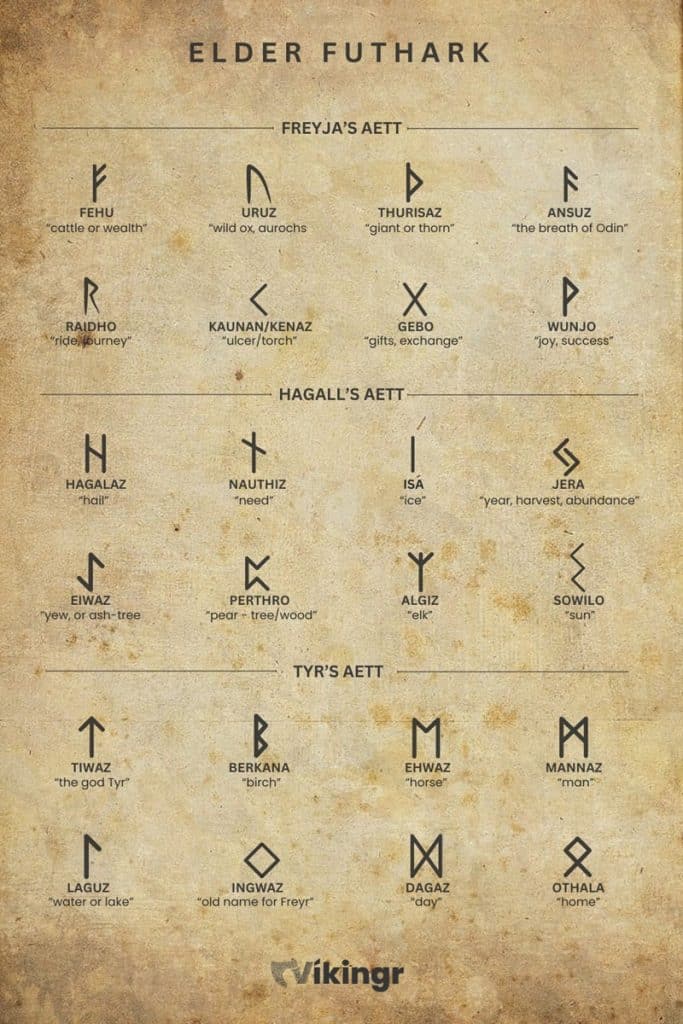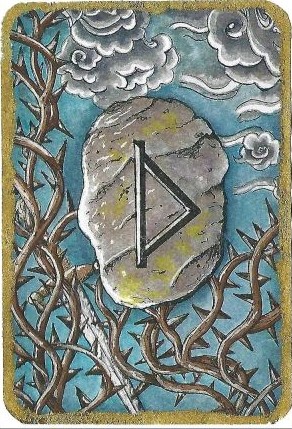The Elder Futhark rune Thurisaz is a giant among the runes, literally associated with the jötnar from Norse mythology. In this post I will share the deeper meaning behind the Thurisaz rune, and the symbolism it harbors.
Thurisaz – Background and Description
The Germanic tribes used the Elder Futhark, the oldest form of the runic alphabets, for the earliest Nordic inscriptions. Thurisaz, the third rune in this sequence, follows Fehu and Uruz, and precedes Ansuz. The name “Thurisaz” hails from Old Norse, translating roughly to “giant” or “monster.”
The etymology of “Thurisaz” is fascinating. Rooted in the Proto-Germanic “*þurisaz,” it’s associated with the giants of Norse mythology, the Jotnar. These beings were often in conflict with the gods, embodying the chaotic forces of nature that stood against the divine order.

Graphical Representation
Thurisaz, a striking rune, visually consists of a vertical line with a single branch, angled to the right, resembling a sideways V. Imagine a lightning bolt, frozen in time, and you’re close to its form.
Historically, variations of its design have been found. Some inscriptions show the rune with a more curved branch or with the branch angled to the left. However, the traditional form remains the most recognized and used.
Phonetic Value
In the Proto-Germanic language, Thurisaz represented the sound “th,” as in “thorn.” As Germanic languages evolved, so did the pronunciation of this rune. In Old Norse, for example, it was pronounced as a hard “t.”
Symbolic Meaning of the Thurisaz Rune

Now, let’s delve into the symbolic heart of Thurisaz. This rune is traditionally associated with the giants of Norse mythology, the Jotnar. These beings were embodiments of chaotic natural forces, often pitted against the gods. Thurisaz, therefore, carries a sense of conflict and opposition.
The rune is also linked to Thor, the thunder god known for his battles against the giants. In this context, it can symbolize not only conflict but also protection and defense. After all, Thor was a protector of humanity, using his mighty hammer Mjölnir to keep the chaotic forces at bay.
The Thunder God Thor is a central figure in Norse mythology, embodying strength, courage, and protection. Thurisaz, with its associations with Thor and the giants, reflects these themes, offering a glimpse into the values and beliefs of the ancient Germanic peoples.
The Aett and its Symbolism
Thurisaz belongs to the first aett of the Elder Futhark, a group of eight runes associated with the god Freyr and the goddess Freyja. This aett, or family of runes, carries themes of prosperity, fertility, and the cyclical nature of life.
Freyr and Freyja, the Vanir deities, are central figures in this aett. Freyr, the God of Fertility, and Freyja, the Goddess of Love, embody the life-affirming energies of growth, prosperity, and love. Thurisaz, with its themes of conflict and protection, adds a layer of complexity to this aett, reminding us that life often involves struggle and opposition.

Elder Futhark Quiz
Do you want to test your knowledge of Elder Futhark runes? Then this quiz is perfect for you!
Don’t forget to play our other games as well!
Thurisaz Used in Divination and Magic

While I don’t personally practice divination, I find its historical and cultural aspects utterly fascinating. In runic divination, interpreters often see Thurisaz as a sign of conflict or hardship. It could indicate a challenge that requires confrontation or a difficulty demanding resolution.
Historically, practitioners likely used it in magical practices such as seidr magic, carving it onto artifacts. Although we lack concrete evidence of specific spells or rituals, it seems plausible that practitioners invoked the rune’s associations with protection and opposition in magical contexts.
In modern times, some practitioners of runic magic use Thurisaz in protective talismans or spells, drawing upon its ancient associations with Thor and the giants. Again, while I don’t personally practice this, I respect the cultural significance and personal meaning it holds for many.
Thurisaz in the Younger Futhark – The Resilient Thorn
Thurisaz, representing a thorn or giant, remains unchanged as the Elder Futhark evolved into the Younger Futhark, also known as Norse runes. It continues to hold its ground, representing the ‘th’ sound, mirroring the resilience and protective qualities inherent in its symbolism. In the Younger Futhark, it is known as þurs.
Frequently Asked Questions
Thurisaz represents conflict, protection, and opposition. It’s associated with the giants of Norse mythology and the god Thor.
In divination, it often signifies a challenge or conflict that needs to be faced.
Thurisaz belongs to the first aett of the Elder Futhark, associated with Freyr and Freyja.
Featured Image Credit: BK, Public domain, via Wikimedia Commons
